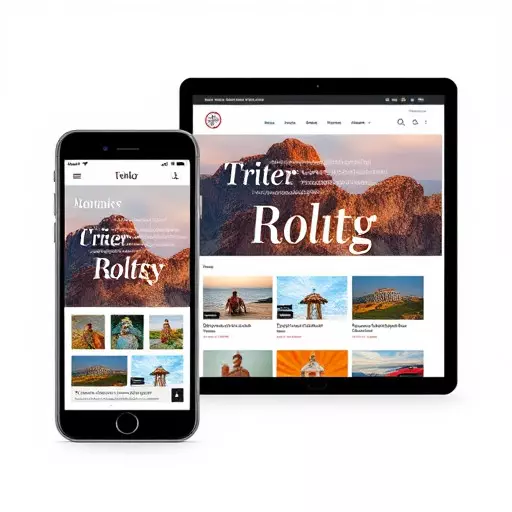Adopting a mobile-first responsive design strategy in New Jersey is revolutionizing web development. By prioritizing smaller screens, developers create websites and apps with fluid grid layouts and flexible images, ensuring optimal user experiences across devices. This method enhances legibility, navigation, and loading speeds, thereby increasing user retention, conversion rates, and SEO rankings by aligning with search engine preferences for mobile-friendly sites.
In the digital landscape of New Jersey, mobile-first responsive design is rising as a pivotal trend, driven by the state’s increasing mobile usage. This approach optimizes websites for smaller screens first, ensuring seamless user experiences across devices. Beyond mobile-first, adaptive web design, powered by fluid grid layouts and flexible images, offers dynamic solutions to diverse screen sizes. As 2023 unfolds, responsive design evolves with voice search optimization, enhanced accessibility standards, micro-interactions, personalized experiences, and the integration of AI. These trends reshape user interactions, making websites not just accessible but engaging and intuitive.
- Mobile-first responsive design in New Jersey: A Rising Trend
- – Impact of mobile usage in New Jersey
- – Benefits of mobile-first approach
Mobile-first responsive design in New Jersey: A Rising Trend

In recent years, mobile-first responsive design in New Jersey has emerged as a prominent trend among web developers. This approach prioritizes designing websites and applications that are optimized for mobile devices first, before scaling up for larger screens. By adopting adaptive web design, New Jersey-based businesses are ensuring their online presence is accessible and engaging across all platforms. One of the key techniques driving this trend is the use of fluid grid layouts, which adapt to different screen sizes, providing a seamless user experience regardless of whether a visitor is on a smartphone, tablet, or desktop computer.
Furthermore, flexible images and media play a crucial role in achieving responsive design. Responsive web design strategies ensure that multimedia elements, such as images and videos, adjust dynamically based on the device’s screen dimensions. This not only improves load times but also enhances accessibility by ensuring content is optimized for various viewing environments. As New Jersey continues to embrace digital transformation, mobile-first responsive design has become a game-changer in creating user-friendly and visually appealing websites that cater to a diverse range of users.
– Impact of mobile usage in New Jersey

In recent years, mobile usage in New Jersey has skyrocketed, reflecting a global trend where smartphones and tablets have become the primary devices for internet access. This shift has significantly influenced the way businesses approach web design, leading to a growing emphasis on mobile-first responsive design across the state. By prioritizing mobile users, New Jersey-based companies are ensuring their websites and applications offer seamless experiences regardless of screen size or resolution.
Adopting adaptive web design strategies, such as fluid grid layouts and flexible images and media, has become crucial for maintaining a competitive edge in the digital landscape. These techniques allow web pages to adapt dynamically to different devices, providing optimal viewing and interaction on both mobile phones and desktops. As a result, businesses are witnessing improved user engagement, higher conversion rates, and better search engine optimization (SEO) rankings, all while catering to the diverse needs of New Jersey’s tech-savvy population.
– Benefits of mobile-first approach

Adopting a mobile-first approach in responsive design has become a game-changer for developers creating websites and applications. This strategy prioritizes designing for smaller screens first, ensuring that the website or app is optimized for mobile devices before scaling up to larger screens. Such an approach offers numerous advantages, especially for businesses operating in highly competitive markets like New Jersey. By focusing on mobile, developers can deliver exceptional user experiences across all devices, thanks to fluid grid layouts and flexible images and media. These adaptive web design techniques ensure that content remains legible, navigation is intuitive, and loading times are swift, which are key factors in retaining users and improving conversion rates.
The benefits extend further, as a mobile-first approach allows for consistent branding and functionality across platforms. This consistency can significantly enhance a brand’s reputation and user engagement. Additionally, search engine optimization (SEO) benefits from this strategy, as Google and other search engines prioritize mobile-friendly websites, giving an edge to those adopting mobile-first responsive design in New Jersey and beyond.


